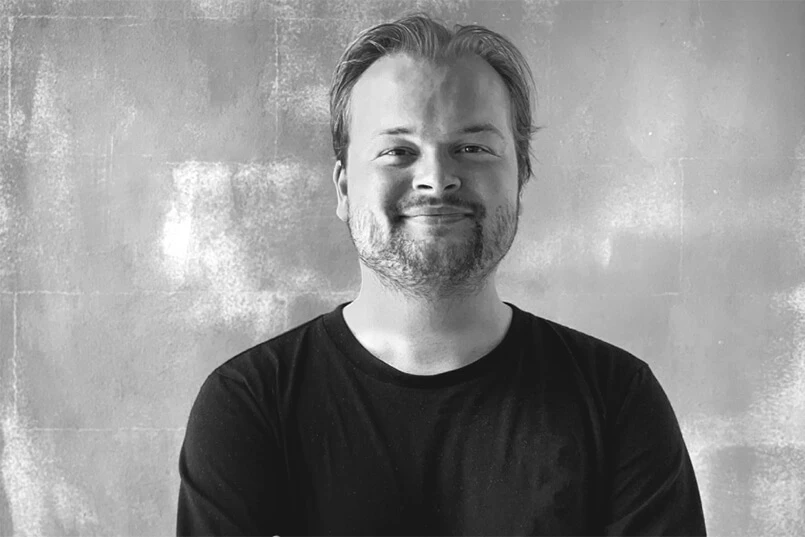You can share and discuss your biggest marketing challenges here.
Back in February this year we had our twice yearly get together in Sydney with all the TrinityP3 consultants from around the world, including Michael Farmer, our new Executive Chairman and the author of the best selling book “Madison Avenue Manslaughter”.
Every six months we get the gang together to review and discuss the business and plan the future. Last February this conversation led to the changes you see on the TrinityP3.com site today. It was started with a conversation with Michael around the trends and challenges facing CMOs and their organisations, which could be summed up in one word – GROWTH – or more specifically the lack of it.
The past two decades we realised we had witnessed the downward pressure not just on agency fees, but marketing budgets. Marketers were expected to do more with less and were increasingly being held accountable to deliver company growth, often while their marketing resources had become fragmented, distributed and misaligned.
Marketers were struggling with managing all of these moving parts in an increasingly complex market. This included their external agencies, which had gone from being a trusted friend they could rely on to a multi-headed hydra struggling for a greater share of their diminishing budget.
We could feel this struggle because over the past two decades we had to evolve to the changing market place too.
The evolution from cost consultant to management consultant
Back in January 2000 we launched P3 to help people achieve commercial purpose through creative process, but quickly found that people (marketers) were more interested in how much they were paying for their creative process. Today our work with our clients is much more focused on delivering both productivity and performance improvement to the marketing process.
This change did not occur overnight but it is instructive to review how this evolved over time and the trends and market changes that influenced this transformation. Like the marketing, media and advertising industry itself, we have needed to keep evolving to the needs of the market.
Yet it is interesting that often people in the industry will remember us for a particular type of project or process, such as pitch management or search and selection, even though this is only a very small component of the work we do with our clients.
Costs consulting
For the first five years of business, P3 was primarily acting as an advertising production cost consultant. Most advertisers were interested in how much they were paying for their productions and if this was fair and reasonable. Television costs were of particular interest, but this raised questions on agency remuneration and media planning and buying and so our consulting base and the scope of our work increased.
The interesting part was the lack of discussion around performance and effectiveness as part of the cost considerations. Marketers were looking for ways to ensure they were maximising the buying power of their marketing and advertising budget.
It was during this time that Dennis Merchant and Mark Chesterfield set up their company Mediabenchmarks in competition with Faulkner Godbold, as it was at the time, and we started working together in a relationship that would eventually see it become part of the P3 offering.
Productivity consulting
In late 2005 / early 2006 we noticed we were increasingly working with procurement professionals on the client side. Their role was to reduce waste and cost in the marketing and advertising spend and they used cost benchmarking as a tool of choice. Largely this meant that our cost benchmarking offering was not required as corporate procurement teams would use their current agency rates as the benchmark and shop around to find more competitive rates to drive savings.
But we had noticed another trend had developed, aligned to the expanding number of channels due to digital. Suddenly marketers found themselves with an expanding roster of agencies, which they struggled to manage. We had earlier commenced offering pitch management, which for many we are ubiquitous, but in fact the opportunity was in roster management and performance.
In 2007 we expanded into Asia with offices in Singapore and Hong Kong and a change in name to TrinityP3. Trinity represented the fact that we were increasingly working with not just marketers and advertisers and their agencies or suppliers, but increasingly the third party, which was finance, or more particularly procurement.
Performance consulting
In the past five or six years our focus has evolved again with marketers, having survived the global recession, now trying to find ways to embrace the opportunities on offer to drive the productivity of their marketing communications. This initially started externally with a focus on agency roster alignment. This is aligning the roster of agencies to delivering high performance strategic outcomes with minimal waste, duplication and management cost.
But increasingly the focus has been directed internally on the marketing structure and process within the organisation. Often the corporate legacy means marketing is aligned to the business or product silos at a time when the marketing needs to be more customer aligned. Or that digital transformation has led to digital as a separate channel rather than being aligned to marketing and business.
While it is true that often as part of the agency alignment we may need to run a tender or pitch, it is not as core to the business as it was seven years ago, even though some in the trade media insist on referring to us as pitch consultants. The fact is we have been focused on productivity and performance improvement across marketing, media, agency rosters and technology for the past five years for some major and innovative companies and advertisers.
Identifying the six major challenges for marketers
In February we shared some of these projects and case studies with the wide team and it became clear that much of our work falls into the five or six biggest challenges facing marketers today. These challenges have become universal, as they have occurred due to the global changes occurring over the past decade or more.
Technology is perhaps the biggest influence. From the impact on media and media channels and the way media is planned and traded, and across owned, earned and paid media, to the innovation and revolution in advertising production, both advancing techniques and creative options and making them more accessible and cost affordable.
Technology has also impacted the ways consumers engage with brands and businesses and the ways businesses and brands must engage with consumers. From social media and digital marketing right through to e-commerce and every step in between on the ubiquitous “sales funnel” marketing is taking responsibility for the planning and management of the customer journey through data-informed personalised marketing and real time media options.
Technology has also driven business response to the economic climate, with companies driving productivity to deliver more for less in the highly competitive global market, not just in products and services, but in their marketing too.
The downward pressure on marketing budgets and the flow on effect drove productivity improvements initially, but with no quality or performance metric to assess value this has led to the commoditisation of paid media and the agencies with a negative impact on relationships, value and marketing performance.
Marketing performance
In the past five years we have restructured more than a dozen marketing functions and teams including media, construction, financial services, tertiary education and more, to align them to delivering productivity improvements, delivering millions of dollars back into the marketing budget in the process. The restructuring process is often driven by a desire to align the marketing to the business objective and the consumer to deliver growth.
We have also increasingly been involved in driving marketing performance through the application of the Zero Based Budgeting (ZBB) process to align the marketing budget to performance metrics and focusing the marketing investment on those areas that drive results.
These results often require for marketing to be collaborating across the organisation and the various stakeholder groups to deliver a consistent customer experience. We have worked with telecommunications, chemical companies, financial services and more in ensuring engagement, alignment and collaboration with these groups to deliver high performance outcomes using the Evalu8ing platform.
Technology performance
As I wrote earlier, technology has had a huge impact on marketing and almost every organisation is on some type of technology or digital transformation. We have worked with those who are taking the first tentative steps or those well in to the process and finding new challenges.
We have helped CPG companies select the right content management system (CMS) and automotive and retail advertisers select the right customer relationship management (CRM) and point of purchase (POP) technology. We have helped companies select digital asset management (DAM) systems and worked with a client who having invested in a major marketing platform, needed assistance delivering the expected outcomes.
One of the challenges with all of these projects is ensuring that the selection of the technology solutions is aligned to the needs of the marketing team and the business, and ensuring it is compatible with the existing legacy technology stack.
Because of the enterprise and technical nature of these projects we find ourselves working with not just marketing, but also IT, procurement and many other stakeholders within the organisation to ensure the best performance outcome.
Media transparency and value
Media has been an important component of our work since way back in 2002 when we commenced working with Mediabenchmarks through P3 Media. Today media is still the most significant investment for advertisers, but it is also arguably much more complex and challenging for our clients due to the issues of transparency, viewability, fraud, misleading metrics and rebates and kick-backs.
One of the main issues is than many advertiser media contracts have not kept pace with the changes in the media market and so now provide little in the way of protection or assurance for their media investment. One of the biggest areas we have been assisting advertisers is undertaking assessments of their current media contracts, media agency remuneration and their processes to ensure they are achieving maximum transparency, value and performance in their media dealings.
In fact we have noticed that in the face of these challenges, many advertisers have considered taking their media agencies to market with a tender or pitch. But we have been able to demonstrate that it is better to address these issues with your current agency, rather than trying to address these issues in the constraints of a pitch. The alternative is many advertisers are considering taking their media in-house and we have been advising several major advertisers on the logistics and benefits of this too.
Agency & roster performance
For more than a decade we have been working with our clients on optimising their agency rosters. These can be relatively small, perhaps ten or twenty agencies and suppliers to massive, with thousands of agencies and suppliers across a multitude of disciplines. Our process is more effective than simply rationalising suppliers based on spend or sorting suppliers into buckets of services or capabilities.
Our alignment process ensures we identify and eliminate waste and duplication while optimising the high performing relationships in the roster. It also ensures we minimise the need for costly time consuming tenders and pitches, but realise significant efficiencies in the roster than can be reinvested back into the marketing budget.
We also ensure the contracts and remuneration models are up to date and reflect the best possible practice for the category. One of the key areas when it comes to agency performance is scope of work management and the associated remuneration model. Beyond rewarding or compensating your agency for the work undertaken, we design remuneration models to encourage and reward value delivery and performance.
Agile delivery performance
Agile marketing is all the rage, but many marketers mistakenly think agile means faster. If being faster to market is required, there are more effective ways to make this happen including building in-house capabilities or streamlining the marketing process with your various agencies or encouraging and managing collaboration across the roster using the Evalu8ing platform.
We have worked with financial services, gaming, technology companies and media firms to either build and develop their in-house agency services or provide an understanding of the financial advantage of the current in-house services. Most of this work is a natural extension of the agency roster performance process and delivers the deeper benefits of the process.
Advertising production cost consulting was an important part of our offering almost two decades ago. Today our work in regards to production management is more focused on ensuring that the benefits of technology and the increased options available to advertisers and their agencies are being used to deliver increased creative solutions and cost effectiveness. This includes decoupling production or building in-house capabilities or outsourcing production in more effective ways.
Sustainable marketing performance
With the 2015 Paris Climate Accord, environmental sustainability is on the agenda for many major organisations, not just because of the commitment to the cause, but a growing realisation that sustainability can deliver reduced waste and increased performance. But in achieving environmental sustainability, organisations will often overlook the contributions of marketing.
We work with a wide range of organisations interested in either developing their sustainable marketing strategy to align with the organisation objectives, providing environmental optimisation of their media planning using the Gaia Partnership CO2 Counter, and assessing internal and external suppliers to ensure they meet sustainability expectations including broadcast, digital and print production.
We also provide our clients with access to compliant and traceable carbon offsets.
Designing the right solution to your challenge
While these marketing challenges have formed under the common change influences facing the global market, the fact is that no two organisations are facing the exact same conditions or circumstances.
Therefore while we have developed outstanding methodologies and processes along side unique resources such as the Ad Cost Checker, Scope of Work Calculator and Evalu8ing, we use these methodologies and tools to develop specific solutions to our clients’ challenges.
The approach is based on combining a qualitative and quantitative approach. This means completely understanding the current issues, circumstances and future requirements, but ensuring that analysis and recommendations are based on more than simply opinion. We rely heavily on undertaking financial analysis of the current model so that we can model and examine the financial implications of any recommendation.
“It is not the strongest of the species that survives, nor the most intelligent, but the one most responsive to change” – Charles Darwin
Just as marketing has changed and evolved since we founded P3 (now TrinityP3) in January 2000, our business continues to evolve in response to these changes.
Our experience and expertise over this time makes us uniquely placed to develop and provide innovative and creative solutions to our clients marketing challenges. It is just a matter of defining what is your biggest challenge. It is likely we can provide a solution. Lets talk.




